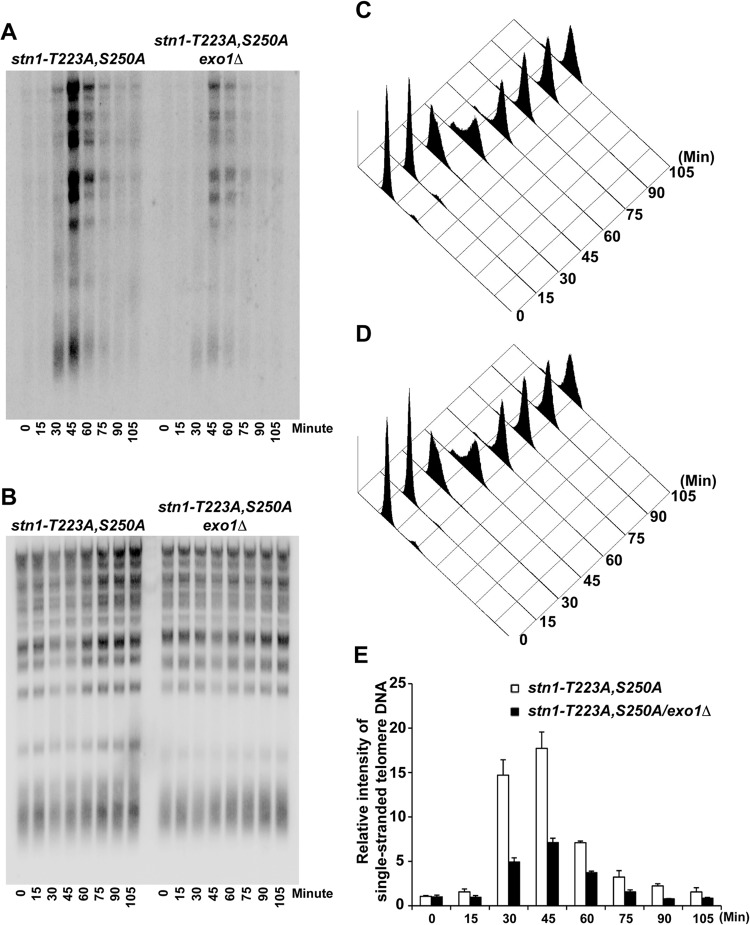FIG 5.
The increase in single-stranded telomere G-rich overhangs in the STN1 phosphorylation mutant is due to an increase in telomere end processing. (A) In-gel hybridization under nondenaturing conditions showing that the increased single-stranded telomere G-rich overhangs in the stn1-T223A,S250A phosphorylation mutant can be suppressed by deletion of EXO1 (stn1-T223A,S250A/exo1Δ). (B) Same gel as in panel A, probed with telomere-specific probe under denaturing conditions. (C and D) FACS analysis showing the DNA content of stn1-T223A,S250A and stn1-T223A,S250A/exo1Δ mutant yeast strains that were used for the in-gel hybridization after α-factor synchronization release. (E) Quantification of the relative intensity of cell cycle-dependent generation of single-stranded telomere DNA in stn1-T223A,S250A and stn1-T223A,S250A/exo1Δ mutant yeast strains. The data are derived from three independent experiments.

